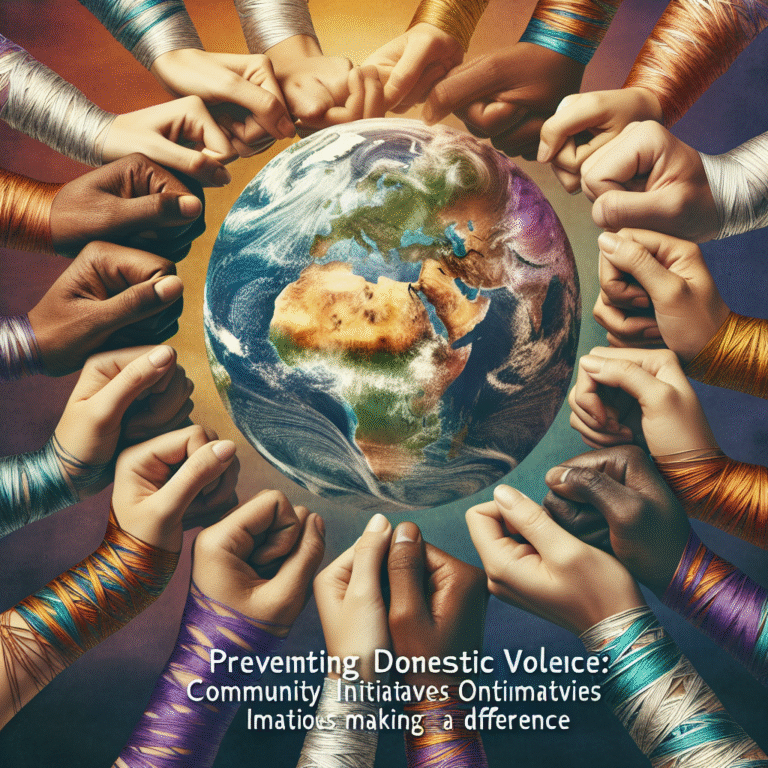
Introduction
In the modern landscape of public health and law enforcement, the relationship between substance abuse and the criminal justice system has emerged as a profound crisis. As the opioid epidemic continues to devastate communities and illicit drug use proliferates, understanding the pathways that lead individuals from addiction to criminal arrest becomes crucial. This journey is not merely one of personal failure but often a reflection of societal neglect, systemic issues, and a lack of essential support structures.
In this comprehensive exploration, we unpack the intricate mechanisms underlying this transition from addiction to arrest, incorporating case studies and data that illuminate the broader societal implications. By investigating how addiction can lead individuals down a criminal path, we better position ourselves to facilitate prevention, treatment, and rehabilitation—ultimately transforming lives.
The Complexity of Substance Abuse
The Science of Addiction
Understanding addiction begins with recognizing it as a complex, multifaceted disease that affects brain function. The National Institute on Drug Abuse (NIDA) highlights that addiction alters the brain’s reward and pleasure pathways, often leading individuals to prioritize substance use over personal, social, or even legal responsibilities.
Table 1: Scientific Principles of Addiction
| Aspect | Description |
|---|---|
| Brain Chemistry | Drugs can increase dopamine levels, leading to euphoria. |
| Behavioral Changes | Users may engage in risky behaviors to obtain substances. |
| Withdrawal Symptoms | Physical and psychological symptoms that compel continued use. |
Societal Factors Contributing to Addiction
Several societal elements contribute to the prevalence of addiction. Social determinants such as poverty, limited access to healthcare, and a lack of educational resources exacerbate vulnerability to substance abuse.
- Stigma and Isolation: Many individuals avoid seeking help due to societal stigma, leading to isolation and increased substance use.
- Economic Instability: A lack of jobs and community resources often drives individuals toward drug use as a coping mechanism.
From Addiction to Crime: Pathways and Triggers
How Addiction Leads to Criminal Activity
The pathways from addiction to crime can be complex but often revolve around two main components: the need to support a drug habit and the actions taken under the influence.
-
Financial Need for Substances: Many individuals resort to theft, drug dealing, or other illegal activities to fund their addiction. The cycle perpetuates itself, ensnaring users in a web of crime.
- Impaired Judgment and Risky Behavior: The cognitive effects of substance abuse often lead individuals to make poor decisions, increasing the likelihood of criminal behavior.
Case Study: The Cycle of Addiction and Crime
Case Study 1: Sarah’s Story
Sarah grew up in a low-income neighborhood with limited access to community services. Following an injury, she was prescribed opioids, which led to addiction. Unable to afford her drugs, she resorted to theft, resulting in her arrest.
Analysis: Sarah’s situation illustrates the role of socioeconomic factors and lack of access to healthcare in the transition from addiction to crime.
The Role of the Criminal Justice System
The Arrest: Consequences and Outcomes
The intersection of addiction and criminal behavior leads to numerous arrests. According to the Bureau of Justice Statistics, nearly 75% of incarcerated individuals meet the diagnostic criteria for substance abuse.
- Incarceration Rates: Individuals with substance abuse issues are often arrested for non-violent offenses. Drug-related arrests consume a significant portion of law enforcement resources.
Challenges in the Justice System
-
Lack of Rehabilitation Programs: Many jails and prisons lack adequate resources for treating substance abuse, leading to high recidivism rates.
- Impact of Criminal Records: Once individuals have been incarcerated, the stigma and barriers to employment further perpetuate the cycle of addiction and crime.
Table 2: Recidivism Rates for Substance Abuse Related Crimes
| Length of Incarceration | Recidivism Rate After 3 Years |
|---|---|
| Less than 6 months | 45% |
| 6 months to 1 year | 60% |
| More than 1 year | 70% |
Intervention and Recovery: Breaking the Cycle
The Importance of Support Systems
Rehabilitation programs that focus on comprehensive support often yield better outcomes. These systems should include:
-
Access to Mental Health Services: Treatment programs that address both addiction and underlying mental health issues are more effective in reducing recidivism.
- Job Training and Employment Support: Helping individuals reintegrate into society through training can reduce dependency on criminal activity to source income.
Case Study: Successful Rehabilitation
Case Study 2: Chris’s Turning Point
Chris struggled with alcohol addiction, leading to multiple arrests for public intoxication. After entering a comprehensive rehabilitation program that included therapy and job placement, he has maintained sobriety for over five years and now works as a counselor for others in recovery.
Analysis: Chris’s case exemplifies how integrated support systems can facilitate successful recovery and reduce the likelihood of recidivism.
Building a Future: Policy and Prevention
Necessary Changes in Policy
To break the cycle of addiction and crime, systemic change is essential:
-
Drug Policy Reform: Advocating for harm reduction strategies can help minimize the negative consequences of drug use without criminalizing those afflicted by addiction.
- Increased Funding for Treatment Programs: Investing in mental health and addiction recovery services can yield long-term societal benefits, including reduced crime rates.
The Role of Community
Community involvement and education around substance abuse can create a supportive environment for recovery. Programs that raise awareness can dispel stigma and encourage individuals struggling with addiction to seek help.
Conclusion
The journey from addiction to arrest is fraught with complexity, but it is also an opportunity for transformation. By understanding the criminal pathways of substance abuse, we can adopt a compassionate and proactive approach.
Empowerment Through Change: With adequate support mechanisms, policy reform, and community involvement, we can help those in the cycle of addiction break free, transforming their lives and potentially contributing positively to society. Let us harness the power of understanding to change the narrative from addiction to recovery.
FAQs
1. What is addiction?
Addiction is a chronic disease marked by compulsive substance use despite harmful consequences, driven by changes in the brain that affect judgment and behaviors.
2. How does substance abuse lead to crime?
Individuals may engage in criminal activities to finance their addiction or act out under the influence, leading to arrests for offenses ranging from theft to violence.
3. What are the consequences of a criminal record for someone with a substance abuse background?
A criminal record can lead to barriers in employment, housing, and social acceptance, perpetuating the cycle of addiction and crime.
4. What types of support are most effective in rehabilitation?
Integrated treatment models that address both mental health and substance use disorders, combined with job training and community support, have shown the best outcomes for recovery.
5. How can society help reduce the impact of substance abuse?
Raising awareness, advocating for policy reforms, and supporting local recovery initiatives can create a more conducive environment for healing and reintegration.
By engaging with the topic "From Addiction to Arrest: Understanding the Criminal Pathways of Substance Abuse," we can collectively work towards innovative solutions that prioritize healing over punishment, ultimately contributing to a healthier and safer society for all.


















